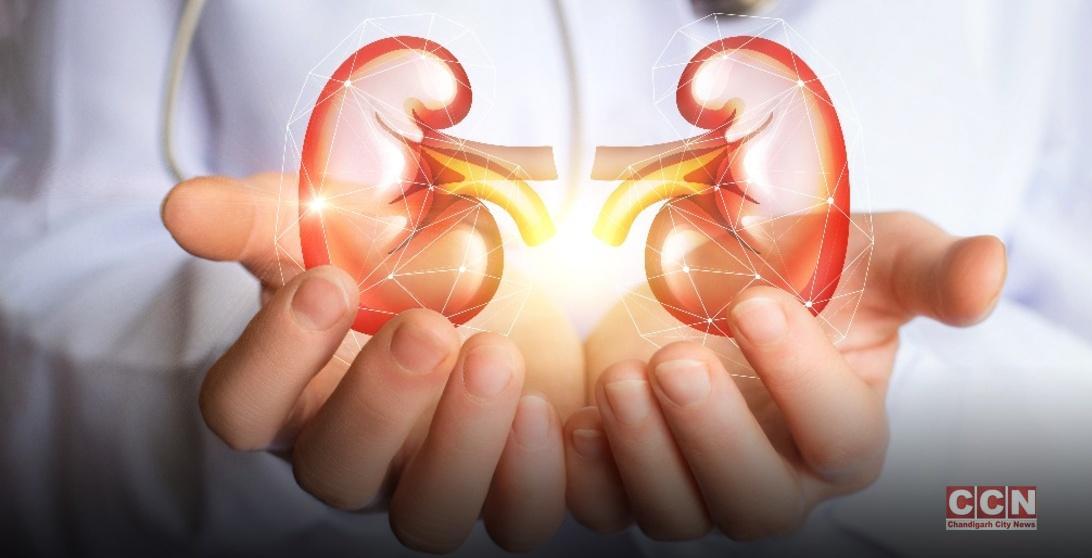How does Chronic Kidney Disease Diagnosed?

How does Chronic Kidney Disease Diagnosed?:Chronic kidney disease (CKD) is on the whole identified with blood and urine checks that discover chemical imbalances because of the modern lack of kidney features. The checks can be accompanied by imaging assessments and biopsies used to pinpoint the exact motive of the dysfunction.
Kidney function exams additionally called renal feature exams, are vital for tracking the development of the sickness and your response to therapy. They are also vital to staging the disease and can help differentiate CKD from acute kidney damage (AKI).
Labs and Tests
Chronic kidney disease develops when the kidneys, for anything reason, are not able to filter out waste and regulate the balance of water and acids in the body. The disorder may be diagnosed via measuring certain substances, called markers, that both upward push or fall when the kidneys are impaired.
The screening technique starts evolved with a battery of blood and urine checks that evaluate trendy diagnostic markers which include serum creatinine (SCr), glomerular filtration charge (GFR), urinary albumin, and blood urea nitrogen (BUN).
Serum Creatinine
Serum creatinine (SCr) checks to measure the amount of a substance referred to as creatinine in your blood. Creatinine is a spinoff of muscle metabolism that is excreted within the urine.
Because creatinine is produced and excreted at a fairly consistent charge, it’s far a dependable measure of kidney characteristics.
The everyday tiers of SCr are:
0.5 to 1.0 milligrams (mg) per deciliter (dL) in ladies
0.7 to 1.2 mg/dL in men
Glomerular Filtration Rate
Glomerular filtration charge (GFR) is an estimation of how nicely your kidneys are functioning. Specifically, it estimates how a lot of blood passes thru the tiny filters of your kidneys, referred to as glomeruli, each minute.
To calculate your GFR, the lab will use an algorithm that factors in your SCr value, age, ethnicity, gender, top, and weight.
The result can offer your healthcare company a pretty correct photo as to whether your kidneys are functioning commonly or abnormally.
The GFR reference range is as follows:
90 to a hundred and twenty milliliters (mL) in line with minute:
Below 60 mL/min: CKD
Below 15 ml/min: Kidney failure, also known as an end-level renal disorder (ESRD)
GFR values can range slightly from one lab to the following, as some may additionally use a different formula to calculate the GFR. To this cease, it enables you to have your exams executed at the identical lab to make sure consistency.
It is also essential to observe that older people generally tend to have values decrease than 60 because the GFR intrinsically decreases with age.
Creatinine Clearance
Another approach to estimating GFR is a test referred to as creatinine clearance (CrCl), which compares your serum creatinine with the quantity of creatinine excreted in urine over 24 hours. The set of rules might also thing for your age, ethnicity, height, and weight.
The ordinary range of CrCl values are:
88 to 128 mL/min for girls
ninety-seven to 137 mL/min for guys
Urinary Albumin
Glomeruli are components of a filtration unit called a nephron. The role of nephrons is to clear out large cells like red blood cells and proteins so that they may be not excreted. When the nephrons are damaged, protein and blood can get away and go out of the body in urine. Using Fildena 150 and Vidalista 60mg tablets are used to solve men’s issue.
One such protein, known as albumin, may be utilized by the lab to locate proteinuria, the immoderate accumulation of protein feature of a kidney ailment. To diagnose proteinuria, the healthcare provider may additionally both carry out a 24-hour urine test or calculate the ratio of urinary albumin to serum creatinine.
The ordinary ranges of urinary albumin are:
zero to eight mg/dL for the 24-hour urine check
0 to 30 for a urinary albumin/creatinine ratio
Blood Urea Nitrogen
Blood urea nitrogen (BUN) measures the quantity of a waste product in your blood, known as urea nitrogen. Urea nitrogen is created whilst the liver breaks down protein and, like serum creatinine, is produced and excreted at a fairly constant price.
The regular variety of BUN values are:
6 to 21 mg/dL for women
8 to 24 mg/dL for guys
A high BUN fee also can recommend the underlying purpose of kidney failure.
Urine Volume
Urine volume is the quantity of fluid you urinate over a given duration. It is mainly used to diagnose AKI and is measured in milliliters (mL) in step with kilogram of your body weight (kg) in line with hour.
Oliguria, the manufacturing of abnormally small volumes of urine, is a feature of acute kidney damage and is defined as anything much less than 0.5 mL/kg/h. Eight Oliguria is less commonplace with CKD.
Kidney Disease Doctor Discussion Guide
Get our printable guide in your subsequent physician’s appointment to help you ask the proper questions.
Imaging
In addition to blood and urine assessments, imaging exams may be used to perceive and evaluate any harm that the kidneys may additionally have sustained. Among them:
Ultrasound is the preferred approach to imaging. It can be used to degree the scale and appearance of the kidney and assist locate tumors, lesions, and blockages. A newer method referred to as a Color Doppler may be used to discover clots, strictures (narrowing), or ruptures within the blood vessels of the kidneys.
X-rays are in particular used to evaluate the scale of kidney stones or to degree the dimensions and form of the kidney.
Computed tomography (CT) is a type of X-ray that can produce pass-sectional snapshots of the kidneys. CT scans can be useful in detecting most cancers, lesions, abscesses, obstructions, kidney stones, and the accumulation of fluid across the kidneys. They may be used for overweight humans for whom an ultrasound may not offer a clean photo.
Magnetic resonance imaging (MRI) uses magnetic waves to produce high-evaluation photos without radiation. While it could be just as beneficial as a CT experiment, an MRI regularly requires a gadolinium assessment dye, which may cause a probably deadly skin disorder called nephrogenic systemic fibrosis (NSF) in people with terrible kidney features.
Kidney Biopsy
A kidney biopsy involves taking a tissue sample of your kidney to look at beneath the microscope. The biopsy can also both be percutaneous (in which a needle is inserted into the kidney through your abdomen) or open (where tissue is received thru a one- to 2-inch laparoscopic surgical incision).
A kidney biopsy can be indicated in sure conditions, including:
- Kidney sickness without a clear cause
- Hematuria (blood in urine)
- Severe proteinuria is accompanied using different signs and symptoms of renal impairment (nephrotic syndrome)
- Kidney trauma
- Renal tumors
Kidney failure
Serious complications of a kidney biopsy are uncommon. In rare cases, bleeding can reason the formation of a renal clot and the inability to urinate. Infection is likewise possible but much less probably if wound care is adhered to.
Staging
The reason for kidney sickness staging is two-fold: to set up how purposeful the kidney is, and to decide the maximum suitable course of remedy. For CKD, the staging is primarily based solely on GFR consequences, which correspond to appropriate remedy plans.
Differential Diagnoses
When there’s proof of renal impairment, the healthcare issuer’s first challenge is to distinguish between continual kidney disorder and acute kidney injury. This is because AKI is often reversible if dealt with right away and correctly. By assessment, CKD is a modern sickness requiring lifelong tracking and care.
Several diagnostic clues could help distinguish between the 2 conditions.
How does Chronic Kidney Disease Diagnosed?
Is there an at-home test for kidney issues?
There are domestic assessments that allow you to gather blood or urine samples and drop them off at a lab or mail them in. Results are interpreted by using a clinical professional and despatched to you. These can be a good option for folks who are not able to visit a healthcare company’s workplace or do not have coverage to cover the checks. However, in case you’re capable of making an appointment to look for a practitioner, don’t forget that alternative first.
When have I seen a healthcare issuer take a look at kidney disorder?
If you understand you’re predisposed to kidney ailment or you’re in a high-chance class, look ahead to early symptoms of a hassle along with changes in blood stress, feeling cold all of the time, issue urinating, or wanting to frequently urinate at night time. Consult a kidney medical doctor in case you notice these symptoms.






